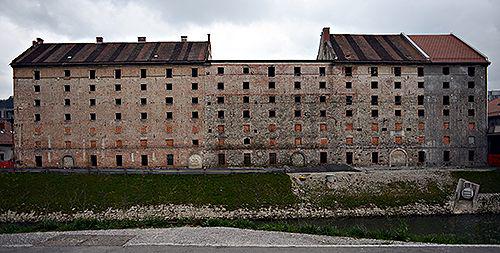
What may, at first glance, appear to be an unremarkable, dilapidated industrial building on the banks of the Ljubljana River, has, through the years, played a surprisingly important part in the history of both Ljubljana and the country as a whole.
The building, known as Cukrarna, was erected in 1828 by a group of Trieste industrialists as a sugar plant. For years, it processed cane sugar for large part of Central Europe and the Balkans. The business was a success, and the facility underwent several expansions, becoming the largest industrial plant in the Slovenian lands by a large margin.
The middle of the 19th century, however, saw Cukrarna enter a period of decline. New competition from sugar beet and a series of fires caused its owners to sell it to the Austro-Hungarian authorities, who converted it into a military barracks. In the period when the Austrian emperor Maximilian ruled Mexico, local men gathered at Cukrarna before they went to fight across the ocean.
Around the turn of the century, Cukrarna became notorious as a refuge for the poor. Among those who lived in the former factory were intellectuals - members of the Slovenian literary avant-garde, who tended to be shunned by established society. Slovenian literary greats such as Ivan Cankar and Oton Župančič lived in Cukrarna for some time, while two promising young poets - Josip “Aleksandrov” Murn and Dragotin Kette - died there in absolute poverty.
For a time, a textile mill operated in the building, but after World War II, Cukrarna once again became the home of Ljubljana’s poorest residents. It was also used by farmers who sold their goods in Ljubljana and needed a place to spend the night.
After Slovenia’s independence, the empty building was frequently used by the homeless as a shelter. The windows were eventually bricked up, but little was done to improve the sad appearance of the historic structure. Ambitious plans that would have turned Cukrarna into a shopping mall or an office building, while preserving its historic architecture, have been shelved due to a lack of funds. Today, Cukrarna still looks much the way it has through much of its colorful – and often sad – history.

































































